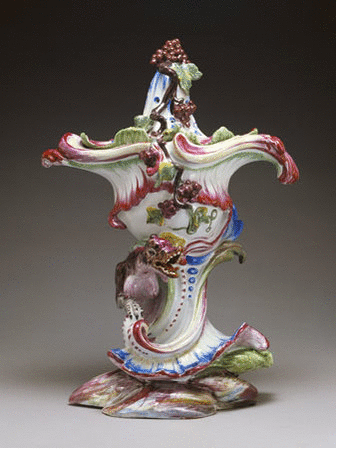Claes Oldenburg’s Soft Sculptures
raumlaborberlin:
4562 Enright Avenue
Exquisite Everyday:
18th–Century Decorative Arts Objects from the J. Paul Getty Museum
July 29–October 15, 2016
3716 Washington Boulevard
St. Louis, Missouri 63108
United States
Hours: Thursday–Sunday 10am–5pm,
Friday 10am–8pm
T +1 314 754 1850
info@pulitzerarts.org
Pulitzer Arts Foundation presents three exhibitions that reframe the objects and environments of everyday life, on view from July 29–October 15, 2016.
The Ordinary Must Not Be Dull: Claes Oldenburg’s Soft Sculptures
With a career spanning over 50 years, Oldenburg has made a radical contribution to the history of sculpture by rethinking its materials, forms, scale, and subject matter. This exhibition is dedicated to Oldenburg’s soft sculptures, a body of work that he began in 1962 and developed over the next two decades. The 14 works on view, all but one made during the 1960s and ’70s, represent food, common fixtures of the home, and domestic objects that might be found in one’s garage or kitchen.
As with Oldenburg’s other work, the soft sculptures undermine the functionality of the objects they represent—challenging our perceptions and unsettling our routines with, for example, a 12-foot-tall, bright blue sculpture in the form of a three-way plug, or a folding chair that appears to droop, or a pile of four-foot-long French fries topped with ketchup. The exaggerated scale, bold colors, and limpness of Oldenburg’s soft sculptures will stand out in especially high relief when viewed within the pristine geometry of the Pulitzer building, where they will transform quotidian objects into a provocative mix of the ubiquitous and the uncanny.
raumlaborberlin: 4562 Enright Avenue
The Pulitzer has commissioned Berlin-based architecture collective raumlaborberlin to create a site-specific installation that considers the question: what does “home” represent, and how does it reflect our lives, desires, and dreams?
Exploring this question as it relates to the built environment in St. Louis—where a steep residential decline since the 1950s has resulted in the prevalence of vacant houses and empty lots—raumlaborberlin worked closely with the local community to develop a project that would take shape both as an art installation and as interactions with a neighborhood. Working with the many residents of Enright Avenue, the Lewis Place neighborhood association, the City of St. Louis, local stakeholders, and key figures in urban planning and organizing, raumlaborberlin salvaged materials from a derelict house fated for demolition in order to create an installation that gives significant elements from the home a new life inside the Pulitzer’s main gallery.
Located at 4562 Enright Avenue, the two-story brick house was built in 1890 and was home to dozens of residents, representing a variety of backgrounds, over the last century. The house, which has fallen into disrepair, has been uninhabited for over 25 years and has now been scheduled for demolition. Raumlaborberlin’s reinterpretation of it looks to both its particular history and the current state of housing in St. Louis in order to imagine how we might dwell in the future.
4562 Enright Avenue will be accompanied by a series of public programs that bring together neighbors, historians, artists, city officials, and national collaborators to explore the challenges related to urban planning and public policy in St. Louis and other cities across the country. This project is raumlaborberlin’s first major museum commission in the United States. Established in 1999, this collective creates projects in public space that investigate strategies for urban renewal, working at the intersection of architecture, city planning, art, and urban intervention.
Exquisite Everyday: 18th-Century Decorative Arts Objects from the J. Paul Getty Museum
This exhibition brings together seven decorative arts objects made in France and Italy in the 1700s, demonstrating the increased attention paid by designers, craftsmen, and artisans of the period to everyday activities. Whereas Oldenburg created “utilitarian” objects with no conceivable practical function, these designers produced elaborate objects, from chamber pots to armchairs, that elevated even the most basic aspects of daily life to a level deemed suitable for their upper-class patrons.
Rich with sensuous detail, interlocking curves, and naturalistic motifs, these works not only reward close looking, but also testify to the serious regard paid to the engineering, production, and consumption of household items—a preoccupation that endures today in the design, quality, and use of many everyday objects.
About Pulitzer Arts Foundation
Pulitzer Arts Foundation is a non-collecting arts institution that presents experimental, progressive, and multidisciplinary exhibitions and programs, encompassing both historic and contemporary art from across the globe. Founded in 2001, the Pulitzer is dedicated to utilizing the naturally lit, contemplative spaces of its Tadao Ando-designed building—one of the country’s most celebrated examples of contemporary museum architecture—to create multilayered experiences that link the visual arts with other cultural forms and heighten audience understanding and enjoyment. Through diverse exhibitions and public programming, the Pulitzer seeks to deepen community engagement with art, and to inspire audiences to think differently about art and its relationship to their lives. Deeply committed to serving the broader St. Louis community, the Pulitzer is an integral part of the Grand Center arts district and the wider cultural and civic landscape in St. Louis.
The Pulitzer is free and open to the public Wednesday through Saturday. Hours are 10am–5pm on Wednesday and Saturday, 10am–8pm on Thursday and Friday. For more information, visit pulitzerarts.org or call T 314 754 1850.
*(1) Jacques Chapelle, Sceaux Manufactory (French, active about 1748–1766), Pot Pourri Vase, about 1755. Faience with polychrome enamel decoration, 13 × 9 1/2 × 6 inches. The J. Paul Getty Museum, Los Angeles. Digital image courtesy of the Getty’s Open Content Program. (2) Claes Oldenburg, Three-Way Plug, Scale A (Soft), Prototype in Blue, 1971. Naugahyde, wood, chain, plastic and wire, overall: 144 x 77 x 59 inches. Purchased with funds from the Coffin Fine Arts Trust; Nathan Emory Coffin Collection of the Des Moines Art Center. © 1971 Claes Oldenburg. (3) Photo: Carly Ann Faye.


